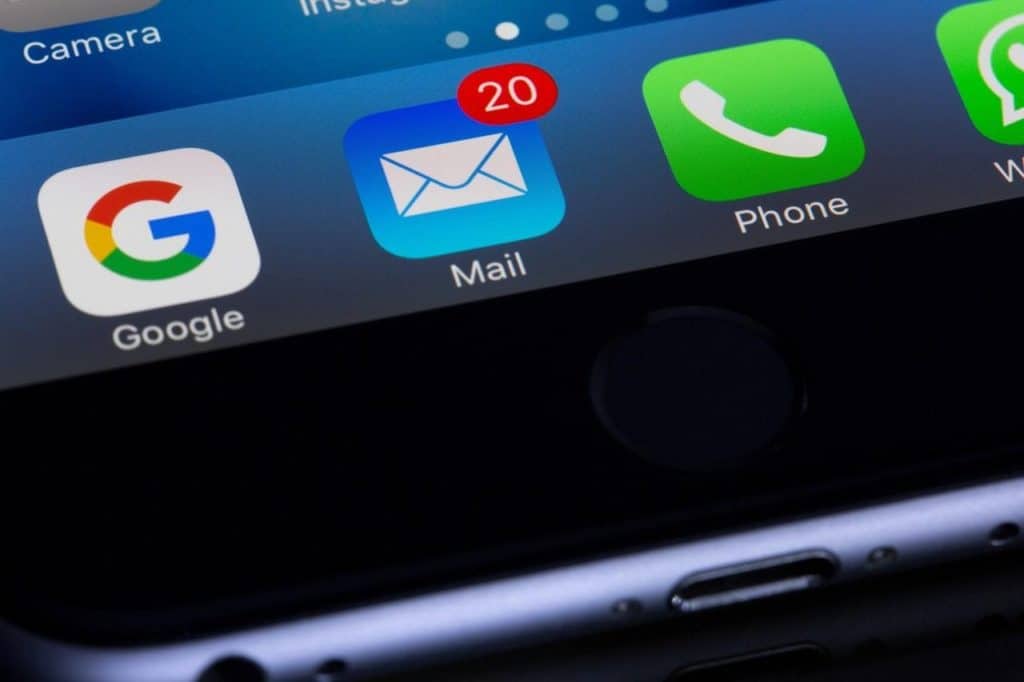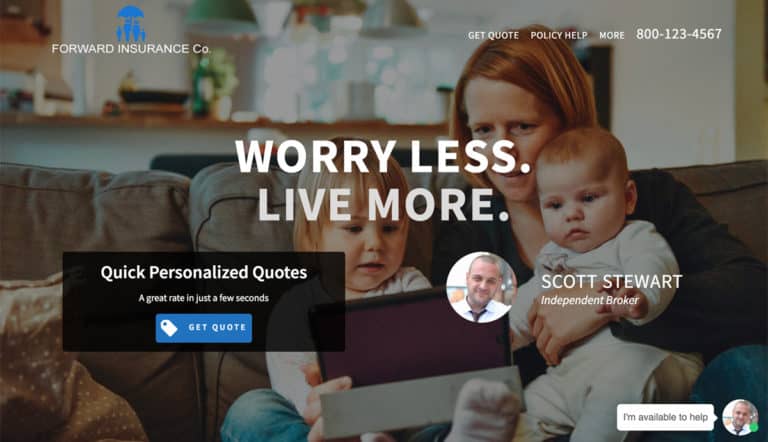Despite platforms such as Facebook, Twitter, and LinkedIn being popular, email is still at the forefront when it comes to digital communication. Projections by Tech Jury indicate that there will be 4.4 billion email users by 2023, with 86% of professionals stating it’s their preferred communication channel.
Without a doubt, email marketing for insurance agencies is one of the primary means of sending marketing communications to policyholders. With 87% of marketers planning to invest more into email marketing in the coming year, it’s time to think about writing a good email campaign for your insurance agency.
In this article, we’ll discuss the value of email marketing, tools you can use to send your emails, and include email copywriting tips on how to write them properly. We’ll also touch on key mistakes related to email marketing and how you can avoid them.
Email marketing is a very valuable means of communication that can transform the way you connect with customers – let’s discuss its role in digital marketing for insurance agencies.
The Value of a Good Email Campaign
If you aren’t convinced yet that you should know how to send an email blast, then let’s begin with the value of email copywriting. After all, why should you focus your efforts on email marketing instead of pursuing other advertising channels?
According to 99 Firms, 65% of email users check email three times a day, with 87% of marketers already using email marketing to distribute content. With 93.6% of internet users aged 25-44 in the US using email in 2021, you can reach a lot of people with your email marketing.
People are simply used to receiving brand emails, sales offers, and newsletters via email as opposed to social media, instant messaging, or SMS. Content delivered by email can be personalized for each user, and you can nurture existing customers more directly than through other channels. There is a wide range of benefits to writing a good email campaign and using it to promote your brand, including:
- Communicate directly with your email list who deliberately subscribed to your content
- Segment your email list and deliver targeted, personalized messages to different demographics
- Quick and easy to set up compared to other marketing channels
- Seamless access to engagement analytics through email marketing platforms
- Low cost and high return when compared to PPC, social media, or printed media ads

Email Marketing Tools to Consider
Writing an email marketing campaign and following through on it will require you to use certain tools and platforms. While you can manage an email marketing campaign manually via Gmail or Microsoft Outlook, this isn’t a good idea. By using specialized platforms, you can collaborate with professional writers and accurately segment and track your email writing performance.
By treating each email as a writing assignment, you can work with a writing service using professional writers to format and proofread emails beforehand. Each of the following email marketing platforms has its perks and downsides for certain businesses and email campaign formats. Make sure to give different ones a shot before you settle on a platform for long-term email marketing use.
Build an Internal Email List
To start marketing your products and services via email, you will need to build a mailing list beforehand. A mailing list represents a list of emails of people who voluntarily gave you their emails at some point. There are various ways to build an email list for your email campaign, including the following:
- Subscription opt-in on your website
- Emails from past customers
- Giveaways and contests with mandatory email signup
- Surveys and polls about your brand with email signup
- Encouraging social media followers to subscribe to emails
It’s always a better idea to build your email list instead of buying one from a marketing agency. People who didn’t give you their contact info voluntarily won’t look fondly toward your emails. If too many people report your emails as spam, your email address can be blacklisted for extended periods, regardless of how you improve your emails. Entice people to subscribe on their own accord instead, and they will be far more likely to purchase your goods going forward.
Set Up Achievable Goals for your Email Campaign
To measure the success of your email marketing campaign, you will need to set up actionable goals to follow. Key Performance Indicators (KPIs) suited for email marketing will let you do just that. With the right KPIs, you will be able to accurately tell how far you are from achieving your email campaign goals. Some of the KPIs commonly used in email marketing are:
- Emails delivered
- Emails opened
- Unsubscribe rate
- Spam rate
- Click-through rate
- Social shares
To set up the best KPIs for your campaign, you can use SMART as your goal-setting methodology. SMART is uniquely designed to only allow for achievable, time-specific goals. These goals will ensure that you are always on track to improve your business’ performance through your email marketing efforts.

Create an Email Campaign Content Plan
An email marketing campaign needs to captivate the audience enough for them to purchase products or services from your website. By using only newsletters or sales emails without diversifying, you will bore your recipients quickly. There are plenty of different email content types you should check out to mix up your campaign:
- Newsletters
- Surveys and polls
- Exclusive discount offers
- Brand storytelling content
- User-generated content
- Blog promotion content
- Social proof content
Take different email formats into consideration when you create your email campaign calendar. For example, newsletters can be sent each month once, while discount emails can be sent twice instead, interspersed with storytelling and blog article content. This will entice your recipients long enough for them to give your brand a fair shot and consider purchasing goods or subscribing to your service.
Utilize A/B Testing in your Email Campaign
To make sure that your email campaigns perform as best as possible, you should test just how effective your writing is. You can do this through A/B testing, or the creation of two similar emails with the same goal but different writing. Write different subject lines, calls to action, and phrase your sales pitches differently in both instances. Split your email list down the middle and send the emails A and B to each half.
This will help you narrow down what kinds of hooks, email formatting, and subject lines work best for your audience. As time passes, you will be able to more accurately write the exact type of content they prefer reading. In return, they will be far more likely to engage with and follow up on your email campaign moving forward.
Use Numeric Values and Data to your Advantage
You can drive engagement in your emails by relying on social proof content which leans to your advantage. People like to see numbers and data in the emails they receive as promotional content. The numbers you include in your emails can be anything from prices, numbers of satisfied customers you served, your service ratings, etc.
Choose the numbers which best play to your brand’s favor and annunciate them to hook your readers. You can do this with bold lettering, all-cap phrases with numbers, as well as with infographics embedded into emails. Use only the numbers which are in your favor, as doing the opposite might drive people away from interacting with your email any further.
Consider Localizing your Emails for International Recipients
Pitching your products and services to international customers might be a tough sell if you don’t translate your emails. People from abroad would like to see content in their language as opposed to exclusively English content.
Translating your emails into Spanish, German, Italian, or French, for example, will elevate your brand’s reputation worldwide. Don’t translate emails by hand, however, as you can accidentally make errors in localizing your writing. You can work with professional translators and native writers instead to avoid communication issues. Sending translated emails to people abroad will raise your odds of converting them into customers down the line.
Make Opting Out an Option for the Sake of Clarity
For the sake of morality and transparency, you should always make it easy for people to unsubscribe or otherwise opt-out of your emails. Failing to add an unsubscribe button to your emails’ footer will be seen as distasteful by most. After all, there is a reason why brand XYZ doesn’t want me to unsubscribe – what is it?
People who can’t unsubscribe from your emails diplomatically will do so by tagging your emails as spam or reporting them – you don’t want that. Make it clear to your recipients that anyone who doesn’t want to receive any more promotional mail from you doesn’t have to do so. If people have the option to check out from future email campaigns, they most likely won’t do that – it’s all about the customer’s advertisement expectations.
What NOT to do When Writing an Email Campaign
While the value of a good email campaign cannot be overstated, there are certain pitfalls you should keep in mind while writing. According to Finances Online, 18% of professionals have experienced dips in email marketing performance due to improper personalization, poor segmentation, and email campaign planning issues.
You will only be able to use email marketing to your advantage if you plan each campaign properly and do not rush into it. Relying on ad hoc email marketing efforts will often result in your emails ending up in spam with little hope of recovering. Let’s take a look at some email marketing mistakes and how you can amend them if they show up:
- Poor subject lines
Your subject line will be the first impression people make about your brand – writing poor email subject lines is a critical error. Write your subject lines in about 60 characters and no more than 10 words in length. This will make your subject lines legible for mobile users and ensure that your recipients don’t flag your email as spam immediately.
- Spamming with frequent emails
Instead of sending as many emails as possible, you should schedule your email content to be periodically sent. Limit your email marketing to certain times of day, week, or month. The frequency in which you send emails should depend on your target audience and your email marketing platform will allow you to schedule them properly.
- Lack of an actionable takeaway
Each email you send to your mailing list should have a clear, actionable takeaway in the form of a call to action. What do you want people to do once they’ve read your email? Answer that question, and you will know how to finish off each email to maximize your engagement rate.
- No audience segmentation
Sending a single universal email to your entire mailing list is a bad idea. Different people will expect different types of content, sales pitches, and offers based on their cookies or previous purchase history. Don’t mass send the same email to everyone, and try to personalize each one as much as you can. Addressing people by their name is a bonus.
Using Email to your Advantage
If used correctly, an email campaign can turn the tide for your business and bring in plenty of new sales to your doorstep. Write an email marketing campaign that accurately reflects your brand and answers the most important questions people might have about your brand.
With some trial and error, you will find optimal ways to write emails, when to send them, and which emotional triggers work for your audience. Once that happens, it will only be a matter of maintaining momentum and writing a good email campaign whenever you have something exciting to offer.






